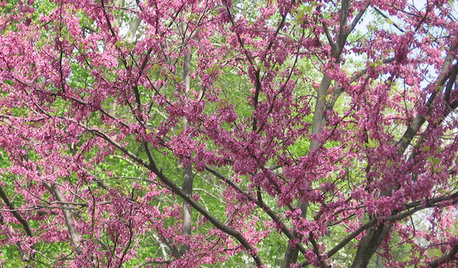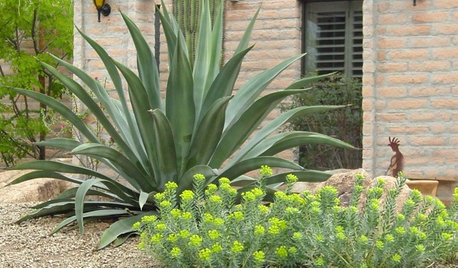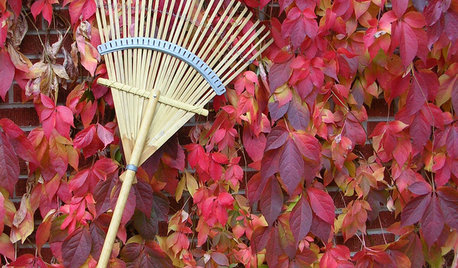Rehydrating Wilted Leaves
maplerbirch
11 years ago
Related Stories

GARDENING AND LANDSCAPING9 Whimsical Touches to Wake Up the Garden
If the August heat is wilting your enthusiasm, try these playful ideas to jump-start your gardening moxie
Full Story
FALL GARDENING11 Trees for Brilliant Fall Color
Give your landscape the quintessential look of autumn with the red, orange and yellow leaves of these standouts
Full Story
GARDENING GUIDESGot Frost-Damaged Plants? How It Happens, and When and How to Prune
Crispy brown leaves are a sure sign that Jack Frost has been to your neighborhood
Full Story
GARDENING GUIDESGreat Design Plant: Eastern Redbud
With romantic pink blooms and heart-shape leaves, this ornamental tree has been inspiring affection since the days of the founding fathers
Full Story
Easy Ways to Dress Up Your Home for Fall
Give your interior a warm autumn feeling with branches, leaves and a burst of orange
Full Story
SPRING GARDENINGSummer Crops: How to Grow Strawberries
Pluck your own sweet strawberries right from the garden vine for smoothies, salads or eating then and there
Full Story
COLORBest Ways to Use the Soft Yellow Color of 2014
You may fall for PPG Pittsburgh Paints’ Turning Oakleaf if you like your hues warm, mellow and cheery
Full Story
GARDENING GUIDESHow to Spot a Drought-Tolerant Plant
Label? Who needs a label? Learn the characteristics of plants that can thrive in hot, dry conditions to help you pick the right ones
Full Story
FARM YOUR YARDCool-Season Vegetables: How to Grow Lettuce
Leaf, butterhead, crisphead or romaine — lettuce is best harvested in the cool weather of spring and fall
Full Story
GARDENING GUIDESYour November Garden Checklist
What to do around the U.S. this month to help your garden thrive — when you're not admiring fall's brilliant colors, that is
Full Story







Tiffany, purpleinopp Z8b Opp, AL
maplerbirchOriginal Author
Related Professionals
Glen Ellyn Landscape Architects & Landscape Designers · Marco Island Landscape Architects & Landscape Designers · Saint Matthews Landscape Architects & Landscape Designers · Stamford Landscape Contractors · Addison Landscape Contractors · Choctaw Landscape Contractors · Roseville Landscape Contractors · West Allis Landscape Contractors · Bethany Decks, Patios & Outdoor Enclosures · Canton Decks, Patios & Outdoor Enclosures · Chandler Decks, Patios & Outdoor Enclosures · Dayton Decks, Patios & Outdoor Enclosures · Dayton Decks, Patios & Outdoor Enclosures · Saint Louis Park Decks, Patios & Outdoor Enclosures · Archdale Stone, Pavers & Concreterhizo_1 (North AL) zone 7
maplerbirchOriginal Author
Kimmsr
maplerbirchOriginal Author
emgardener
rhizo_1 (North AL) zone 7
maplerbirchOriginal Author
emgardener